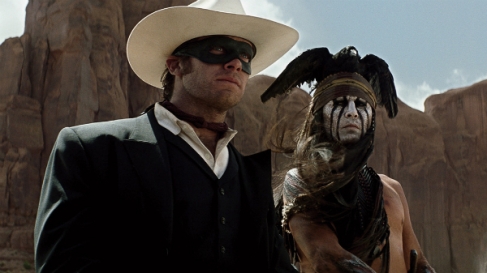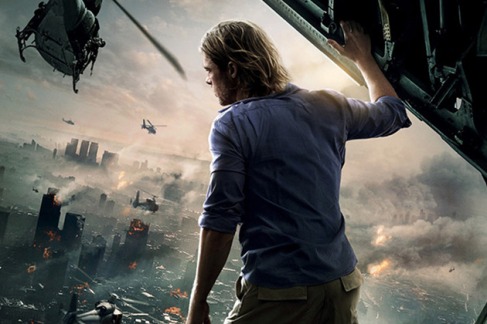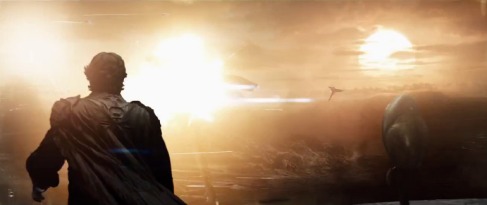A Lone Ranger movie today is a hard sell. Our most recognized heroes are dark and brooding (“The Dark Knight Trilogy”‘s Batman), young heroines that appeal to the young-adult book readers (“The Hunger Games”‘s Katniss) or colorful characters fighting world-shaking enemies (The Avengers). Where does the Lone Ranger fall, a character created in the 1930s and rooted in a time even earlier than that? Hollywood has recreated classic heroes for modern audiences before: Christopher Nolan did it with Batman and most recently Zack Snyder did it with Superman. Superman as a character, especially after the Christopher Reeve clone that was “Superman Returns,” was someone that needed an extreme makeover in order for audiences to embrace him. For the most part, “Man of Steel” succeeded. Despite a controversial ending, the film succeeded as a reinvention because it stripped the Superman franchise of all the familiar elements of the Richard Donner/Reeve era while also embracing who he is as a symbol. It wasn’t your grandpa’s Superman, but it was still Superman.
In the case of the Lone Ranger, the problem may be that he is, in essence, a “grandpa’s superhero.” He’s a Texas ranger in the 1860s with a strict moral code that included always using proper English and never shooting to kill. A hero worth admiring in the 1930s, even worth admiring today, but one that may not resonate as well. In an effort to bring this masked avenger to modern movie-goers, the team behind the “Pirates of the Caribbean” franchise infused the same type of thinking they used for those movies into the new “The Lone Ranger” movie: big, loud, far-fetched exploits and Johnny Depp. The problem is that they didn’t bring any of the fun and enjoyment from those movies over to this one. “The Lone Ranger” is an awful, tiring, obnoxious experience.
What makes it so awful? When you have a movie where the sidekick gets top billing because the studio isn’t confident in its main star, or title character for that matter, you already know you have problems. Armie Hammer plays the masked man and Johnny Depp plays his Native American savior/sidekick Tonto. Hammer fumbles and slouches his way through the movie, never appearing very heroic. His John Reid/Lone Ranger is a bumbling idiot, portrayed as a buffoon who gets lucky. Then you have Depp, white-faced to make him look less Johnny Depp-like but you never forget that it’s him. He pulls out every trick in his utility belt to give the movie an extra little sense of enjoyment, and sometimes he succeeds. But it’s hard to get past the fact that he’s basically playing a Native American Jack Sparrow. The Lone Ranger and Tonto are supposed to have each other’s back, but that’s thrown away in favor of a wannabe “buddy cop” relationship. The Ranger treats Tonto like crap, and vice versa. Even “kemosabe” doesn’t mean “faithful friend” in this interpretation.
So at it’s core, “The Lone Ranger” is a “Pirates” clone in the old west minus anything enjoyable. It tries way too hard to be a fun blockbuster and in the end isn’t fun. Producer Jerry Bruckheimer (seriously, what is HE doing making a Lone Ranger movie) and director Gore Verbinski never seem to know when to quit and with a running time of two and a half hours (already too long in itself) it feels like four. “Go big or go home” clearly doesn’t work for a film that should have never been intended to be a “blockbuster.” But despite its insistence to cram as much unnecessary story, unneeded characters, and over-the-top action set pieces, it still manages to find time to get a little “dark” in spots. Villain Butch Cavendish eats someone’s heart right out of him and there’s cannibalistic bunnies. Why? I don’t even think the writers know.
If the movie had been stripped down and did away with its unnecessary components, it may have been a tad more enjoyable; Helena Bonham Carter’s character is the definition of a throwaway character and the film is narrated by an aging Tonto display at a fair in the 1930s. Again, why? But for it to be a truly good movie, literally everything about it could be changed. I get that Disney wanted to try and cash in on the “Pirates” popularity and do something reminiscent of that, but it just doesn’t work. At all. Not to sound cliche, but I like to think of how better the movie had been had it taken a “Batman Begins” approach to the Lone Ranger and been more realistic.
Alas, that’s not the case, and we’re left with a rather dull effort despite how bombastic it tries to be. To its credit, when the famous “William Tell Overture” (The Lone Ranger’s classic theme) begins to play, I got a little excited. It’s followed by a train-chase sequence that’s actually kind of exciting. But by that time, it’s way too late. It was clear way beyond that point that this movie is a parody masked as a Lone Ranger film, never taking itself seriously and ripping the heart and soul right out of the title character. Who is that masked man? Who knows. Nobody asks.
1 star










